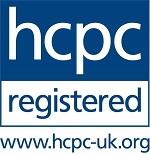Assessment and Treatment of Tourette Syndrome
As an expat or someone living far awayfrom a specialist centre for neurobehavioral disorders, you’ll know how hard it is to find English-speaking psychologists.
We are experienced UK qualified psychologists providing online assessment and diagnosis of Tourette’s and Tic Disorder using internationally recognised, reliable tools.
Our therapy uses proven methods such as Habit Reversal Therapy(HRT), Behavioural Therapy, Exposure and Response Prevention (ERP) and Comprehensive Behavioural Intervention for Tics (CBITs).We will help you to manage your tics better, and live a more fulfilling life at work or at home.
If you are self-conscious about your tics or have other emotional issues,we will also use Cognitive Behavioural Therapy (CBT),Mindfulness-Based Cognitive Therapy (MBCT) and Compassion Focused Therapy to help you feel better and more confident.
Download here a guide to therapy for Tics/Tourette's.
Download here a guide to the diagnosis of Tics/Tourette Syndrome.

What does a diagnostic assessment for Tourette Syndrome or Tic Disorder look like?
We use guidelines like theEuropean Society for the Study of Tourette Syndrome (ESSTS) (2011) to inform our diagnostic assessments and therapy.
When we meet a young personor adult with suspected Tourette Syndrome (TS) or Tic Disorder we gather information about the symptoms from various sources. Ideally, we like to get the perspective of the patient as well as a family member, or others significant in their life (‘informants’). The reason we like to speak to someone who knew the patient in childhood (in the case of an adult) or the parents (in the case of a child) is because TS is a ‘neurodevelopmental’ condition,which means the symptoms started in childhood. This is why w eask for school reports if they are available, and/or talk with the parents or carers.With adults it can be really helpful for us to speak with the patient’s partner or a friend who knows them well. If the patient isn’t able to identify a suitable person for us to talk to live by video call or telephone, then we can email them and ask them to complete some questionnaires instead. Patients should have had other medical causes for their tics screened out prior to coming to us. This could be with a GP or neurologist, or in the case of children and young people a paediatrician.
The assessment process is conducted by one of the team.We charge a fixed fee (contact us for details) for the assessment and diagnosis which comprises the elements below:
1. We collect some information from the patient and those close to them before we meet. These questionnaires can be returned by email.
2. Ideally, a short piece of video footage will be collected by a parent or other informant (with patient's permission) lasting 5 to 15 minutes of the full range of the patient's tics
3. When these sources of information have been collected, we will meet the patient in a video call (or in some cases in person). This is called a Clinical Interview and it usually lasts about 60 minutes. If we are assessing a child or young person, we will invite the parents to be present for at least part of the meeting.
4. Either in this meeting, or a second one, we will conduct a Structured Diagnostic Interview which lasts one to two hours. Ideally this includes an informant.
5. In our last meeting we will feedback the results (approx 30 minutes) and provide a written report. Further amendments may be made after the meeting before it is finalised.
6. We will send the final report to the patient and any other health professionals involved (with written consent).
Please note:when there are multiple complex difficulties then further assessment sessions and/or liaison with other professionals or informants may be recommended. If there is Autistic Spectrum Disorder, ADHD, or a mental health problem like OCD suspected then these can be investigated separately for an additional fee. If medication is something the patient would like to explore, we can make a referral to a Consultant Psychiatrist who is able to prescribe medication for TS.
What does therapy for Tourette Syndrome look like?
We offer a type of CBT called Comprehensive Behavioral Intervention for TourettesSyndrome (CBITS). This is a well-proven psychological therapy developed by Prof Doug Woods, a clinical psychologist from America.
After the assessment has been completed therapy will typically consist of 8 meetings where we address your tics one by one. More information about how clinical psychologists work with Tics/Tourettes is available in this leaflet written by Alesia with Dr Tara Murphy. What we are aiming to do is to help you manage the tics so youfeelmore in control and less bothered by them.
1. The first thing we do in therapy is to conduct a 'functional assessment'. Here we analyse your environment or social context which makes the tics worse. We then try to change those triggers with a 'function-based intervention'. We list all the tics that bother you the most, and put them in hierarchy, with the ones that distress you most at the top.
2. The next thing we do is called Habit Reversal Therapy (HRT). We pick one of your tics, and teach you how to spot when it is going to occur by scanning your body to see if there is a 'premonitory urge' or 'tic signal'. After this tic awareness training we then help you create a 'tic blocker' or competing response (CR). This is something you can do instead of the tic until the urge to tic dies down / doesn't bother you anymore. The CR has to meet certain criteria to be effective, such as something that looks natural which wouldn't be noticed by others.
3. When you feel that the first tic has been dealt with sufficiently, we then create new CRs for each tic on your hierarchy. You'll need to practice each CR for several days at home until you have retrained your brain to block the tics.
4. We may also use some relaxation and CBT strategies as we progress through therapy, as stress often makes tics worse.
After the initial 8 sessions we hope you will feel more confident managing your tics.You will be offered three 'booster' sessions once a month to help you maintain your progress and support you as applythe strategies independently to your everyday life.
If you would like to see what CBITs and HRT looks like live, you can watch Prof Doug Woods demonstrate the techniques in this video. There is another great video with DrTara Murphy 'Rupert shares his experience of CBIT therapy with TourettesAction'. This video addresses some of the misconceptions about CBiTs.
Some people have a lot of tics and they find the CR too complicated and want something simpler. This is where Exposure and Response Prevention can be helpful.We don’t have as many scientific studies on this type of treatment yet and that is why we don’t recommend it first. However, lots of people find itmore straightforward and just as, if not more, effective for them.
Where do you see people?
We specialise in helping people online by videoconference call so our patients can be located anywhere in the world. We also may be able to meet in person, either in theUK ,or elsewhere in Europe. If you require us to come to you, please contact us for details. Many of our clients are English speaking expats who are unable to access diagnostic and treatment options in their host country.
Useful materials for clients
ProfDougWoodshas written one of the most important CBT manuals currently used in this field 'Managing Tourette Syndrome: a behavioural intervention for children and adults'.
DrTaraMurphyhas written a really useful book about TS in general. It looks at the biology, medication issues as well as psychological therapies for the disorder 'Tic disorders: a guide for parents and professionals' .
A great book for children and young people is Nix Your Tics by Dr Duncan Mckinlay. Unfortunately, you cannot buy a hard copy at the moment and only aKindle versionis available.
References
- ESSTS, (2011). European clinical guidelines for Tourette Syndrome and other tic disorders. Part 1: assessment. European Child and Adolsecent Psychiatry, 20, 155-171.









